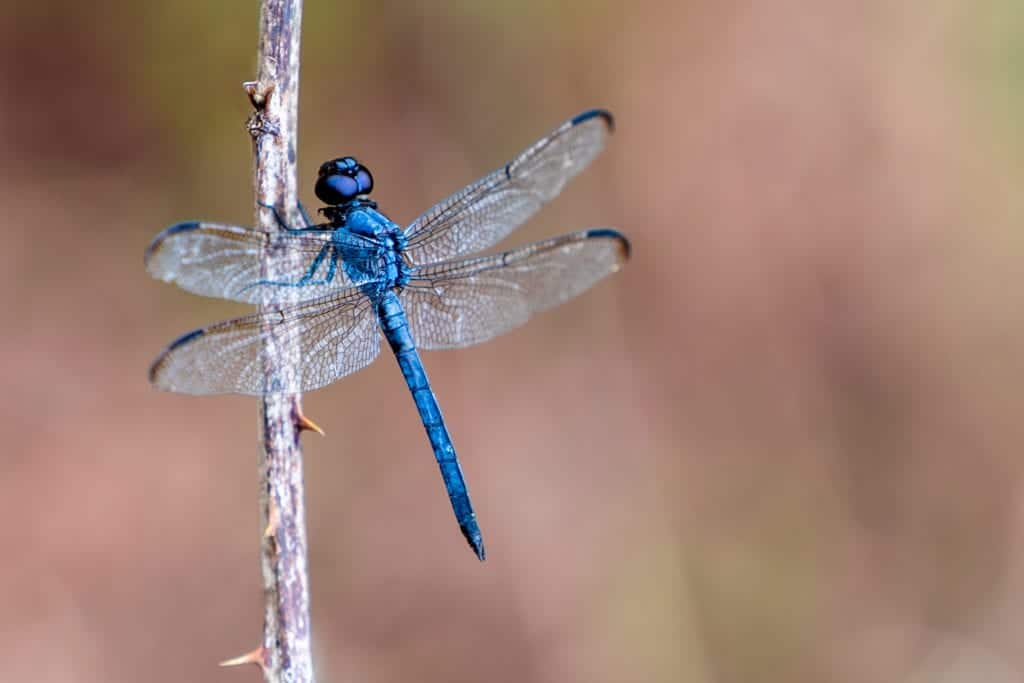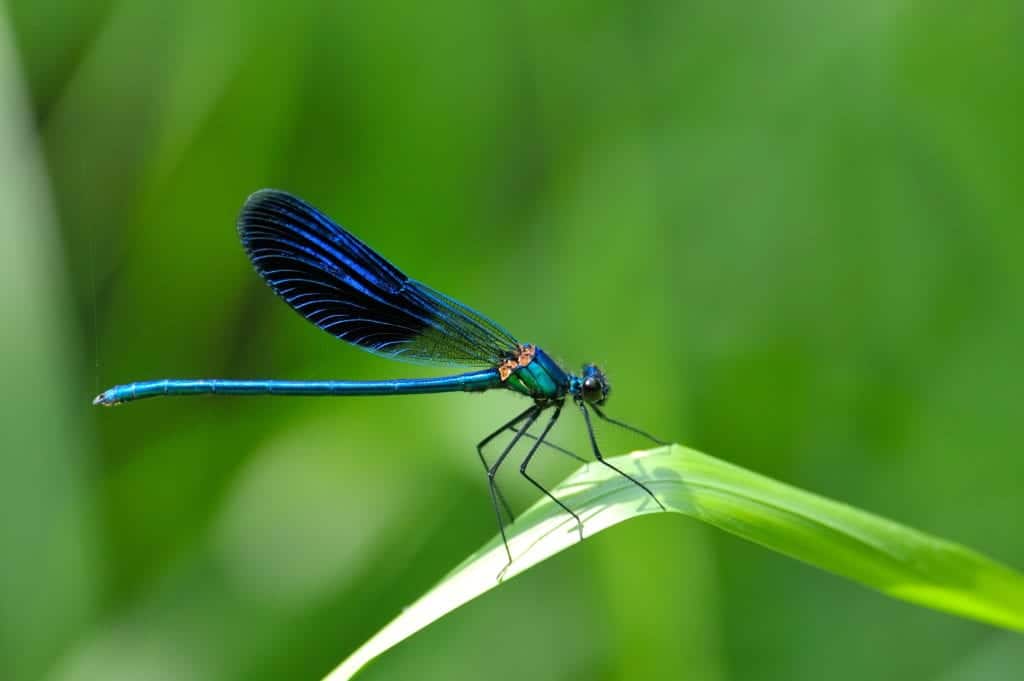Dragonflies vs. Damselflies
Dragonflies vs. Damselflies
Family Members
Dragonflies and damselflies – one breaths fire and is covered in scales, while the other is trapped in a tall tower guarded by the first one… or maybe they’re just flying insects… Both are members of the insect order Odonata, meaning ‘toothed one.’ Dragonflies are a subspecies called Anisoptera, while Damselflies are in the Zygoptera subspecies and these two fast flyers have many similarities. In fact, damselflies are often mistaken for their larger cousins and most people are unaware that there is even a difference between the two alike bugs. 
Size
Dragonflies range from roughly 1 to 4 inches in length. In the past, they were shockingly larger, reaching a total wingspan of 30 inches. While their reduction in size today is significant, they still retain their heartier body type. Contrastingly, damselflies are known for their delicate frames and range from roughly ¾ to 1¾ of an inch in length.
Appearance
Body Shape – Dragonflies are typically much larger than their cousins with bulky bodies and a more compact overall physique. The damselfly is so named for it’s far more elegant and soft appearance. Their bodies are long and spindly, roughly the shape of a narrow twig. Eyes – Both Odonata have large compound eyes that help them to see nearly 360°. The Eyes of dragonflies are proportionally massive to their bodies and nearly covering their entire heads. In some cases, their eyes even touch on the top of their heads. Damselfly eyes are notably separate and smaller, but still proportionally large compared to their bodies and heads. Wings – Transparent, membranous wings are present on both insects. On dragonflies, their rear wings are larger at the base than on at the tips and both sets of wings are rather wide. For damselflies, their wings taper at the base and are delicate and thin throughout. 
Position at Rest
When they are darting around in the air, it is very difficult to actually discern these different nuances in appearance. However, when these Odonata are at rest, there are several telltale signs as to which is which. Dragonflies land with their wings open, displaying their four wings perpendicular to their bodies. In contrast, with the damselflies, their wings are held parallel to their bodies and folded in together at rest.
Lifestyle
While dragonflies are generalist eaters, they are picky as to the weather when they hunt. Once the air becomes cool, dragonflies cease to hunt while the damselflies will continue their routines, unhindered. All Odonata are simultaneously predators and prey, always on the hunt for food and always on the lookout to protect themselves against frogs, spiders, fish, birds, etc. The larval stages of both creatures are spent underwater as they lay their eggs in an aquatic setting. As larva, dragonflies will be nearly their size full-grown, roughly measuring in at 2 inches long. Damselfly larva are much smaller, typically under an inch, and sport a wispy trident-shaped tail.
Citations
Egnoto, C. (2017) All About Dragonflies and Damselflies, YouTube. Nature Now. Available at: https://www.youtube.com/watch?v=eyFg59V2eHA (Accessed: June 2020). Hadley, D. (2019) How to Distinguish Between a Dragonfly and a Damselfly, Thought Co. Available at: https://www.thoughtco.com/difference-between-a-dragonfly-and-a-damselfly-1968359 (Accessed: June 2020). Heimbuch, J. (2020) How to Tell the Difference Between a Dragonfly and a Damselfly, Treehugger. Available at: https://www.treehugger.com/how-to-tell-difference-between-dragonfly-and-damselfly-4864536 (Accessed: June 2020). Introduction to the Odonata (N/A) Berkeley University of California. UC Museum of Paleontology. Available at: https://ucmp.berkeley.edu/arthropoda/uniramia/odonatoida.html (Accessed: June 2020).
Request a Free Quote Today
(We do not share your data with anybody, and only use it for its intended purpose)
